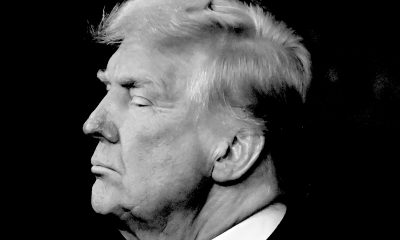Arts & Entertainment
GLAAD’s ‘Together in Pride’ raises $225,000
Online fundraiser featured dozens of LGBTQ celebrities
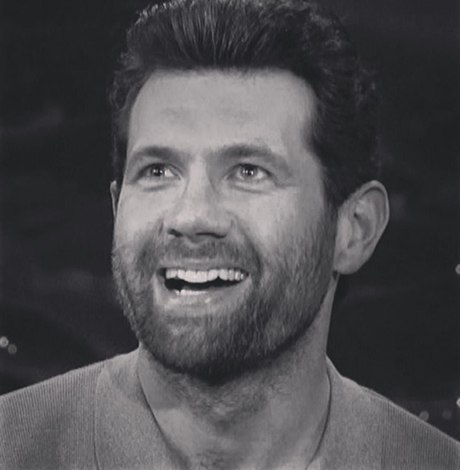
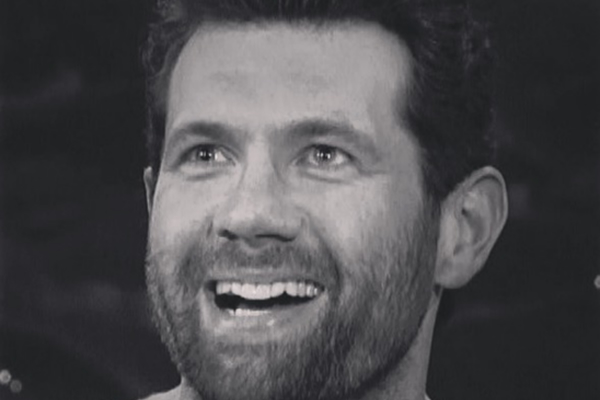
After weeks of social distancing, connecting with the rest of the world only from a screen is starting to wear a little thin.
With that in mind, it’s even more remarkable that GLAAD last weekend managed to pull off an impressive show of solidarity and support for the LGBTQ+ community with a virtual gathering that actually felt – almost, at least – like the real thing.
“Together in Pride: You Are Not Alone,” which streamed live on GLAAD’s YouTube channel Sunday evening, brought together dozens of celebrities to participate and perform from the safety of their living rooms, in an event that was intended to highlight the LGBTQ response to the COVID-19 pandemic, to bring the LGBTQ community together with messages of acceptance, to honor LGBTQ heroes providing direct services during COVID-19, and to raise much-needed funds for local LGBTQ centers affected by the crisis.
The livestream was presented by GLAAD to benefit CenterLink, a coalition of more than 250 LGBTQ community centers from 45 states, Puerto Rico, and the District of Columbia, as well as Canada, China, Mexico, and Australia.
If you were not one of the thousands who watched live or have since viewed it on YouTube, it won’t be a spoiler to say that the event succeeded in raising over $225,000 in initial funds ($150,000 of which was gifted by the Ariadne Getty Foundation), all of which will go to CenterLink, and that number is still rising as donations continue to be accepted.
The livestream event, at just under two hours, never seemed to drag. Juxtaposing interviews, performances, and discussions of topics surrounding the impact of the virus on the queer community, the slickly produced show maintained – for the most part – a healthy balance between entertainment, advocacy, and passing the hat. Much of that is thanks to Billy Eichner and Lilly Singh, who split hosting duties for the evening and provided a welcome upbeat energy to the whole affair.
Eichner started things off on a light note that prevailed throughout the livestream without undermining the importance of its underlying purpose. In several engaging interviews, interspersed throughout the show, he spoke with LGBTQ trailblazers like “Schitt’s Creek” creator and star Dan Levy, former presidential candidate Pete Buttigieg and his husband Chasten, “American Idol” star and Queen front-man Adam Lambert, and (as Eichner introduced him) “the hideous” Matt Bomer.
Alternating with Eichner was Singh, who matched his good-natured presence with her own infectious joy, gleefully changing outfits from one segment to the next. Among her interviews were “Will & Grace” star Sean Hayes and his husband Scott Icenogle, LGBTQ ally and “Orphan Black” star Tatiana Maslany, and “Queer Eye” star Jonathan Van Ness, who talked about the importance of breaking down the stigma around people living with HIV.
There were a lot of highlights. Other interviewers included Rosie O’Donnell, Wilson Cruz, Brian Michael Smith, and Michelle Visage; there were appearances from Tony and Emmy Award-winner Billy Porter, Gigi Gorgeous and Nats Getty, Ross Mathews, “Hamilton” star Javier Muñoz, Bebe Rexha, Patrick Starrr, and D.J. “Shangela” Pierce, as well as longtime ally and GLAAD supporter Sharon Stone. There was even a special message to the LGBTQ community from beloved superstar Barbra Streisand.
The standout moments of the livestream, however, were undoubtedly the performances. Headliners Kesha and Melissa Etheridge delivered performances – Kesha sang “Rainbow” while Etheridge gave renditions of “Everybody Has a Pulse” and the classic “Come To My Window” – that were as committed and polished as if they had been executed on any concert stage, and were made all the more affecting by the intimate setting.
Their efforts were matched by a stunning performance from gender non-conforming actor Alex Newell, whose powerful delivery of “Stand Up for Love” surely moved more than a few sheltered-at-home viewers to stand up from their couches in ovation, and by the cast of Broadway’s “Jagged Little Pill,” whose multi-split-screen performance of “You Learn” reminded us of both the complex and inclusive humanity layered into the lyrics of Alanis Morrisette and the irrepressible talent of the professional theater community – a segment particularly hard-hit by the economic impact of the coronavirus shutdowns across the nation.
Each of these performances could be called a stand-out, but the livestream’s show-stopping moment came with the duet “Suddenly, Seymour,” from “Little Shop of Horrors,” performed by actor George Salazar and “Pose” star Mj Rodriguez. The two performers, who last year starred in an acclaimed Pasadena Playhouse production of the Howard Ashman/Alan Menken-penned musical, brought an intensity of feeling to the screen that made us forget, for a few precious minutes, that they were separated from each other, and even from us – we might have been watching from the front row. It was an outstanding performance, by any standard, and proof that each of these gifted actors deserve to be taken seriously as members of a diverse new wave of talent in the entertainment industry.
Of course, throughout “Together in Pride,” in between all the “fun stuff,” were the reminders of why we were gathered virtually to begin with – the plight of LGBTQ centers, cornerstones of the queer community and important providers of much-needed services to under-served segments within that population, that are struggling to stay open long enough to survive into a still-uncertain future. GLAAD is a powerful ally, but even having the world’s largest LGBTQ media advocacy organization on your side is no guarantee of survival.
There are also the inevitable questions about the future of our culture that arise from the vague, indefinable dissatisfaction many of us feel when watching these kinds of entertainment experiences, patched together remotely from disparate places and assembled, hopefully, into something that can help us escape, just for awhile, the day-to-day drudgery of life during lockdown. Is this what we have to look forward to for the foreseeable future? Will we ever be able to be in the same room with our favorite performers again? Will they ever be able to be in the same room with each other?
Fortunately, “Together in Pride: You Are Not Alone” succeeded not only in raising money and awareness, it succeeded in raising consciousness. Through its sincerity, its welcoming spirit, and its dedication to elevating the efforts of those in our community who are playing the role of helpers throughout this crisis, the GLAAD livestream event reminded us that we are, indeed, all together in this, even if we’re far apart, and if we are going to make it through it will be because we have each other’s backs.
The hope that springs from that recognition is more than enough to dispel any doom-and-gloom feelings you might have going into the show, and that’s as much a win for GLAAD, in its own way, as its success at bringing in donations.
You can watch the event in its entirety on GLAAD’s YouTube channel.
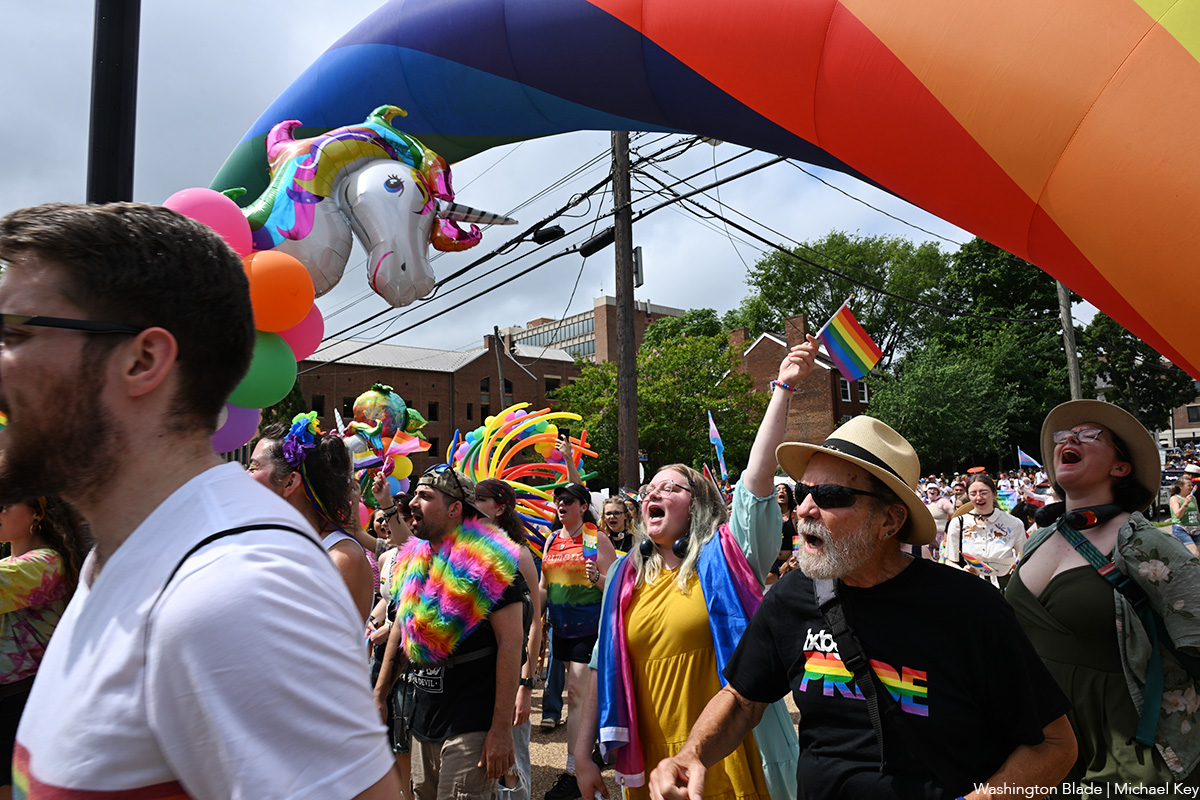
The fifth annual Fredericksburg Pride march and festival was held on Saturday, June 28. A march through the streets of downtown Fredericksburg, Va. was followed by a festival at Riverfront Park.
(Washington Blade photos by Michael Key)
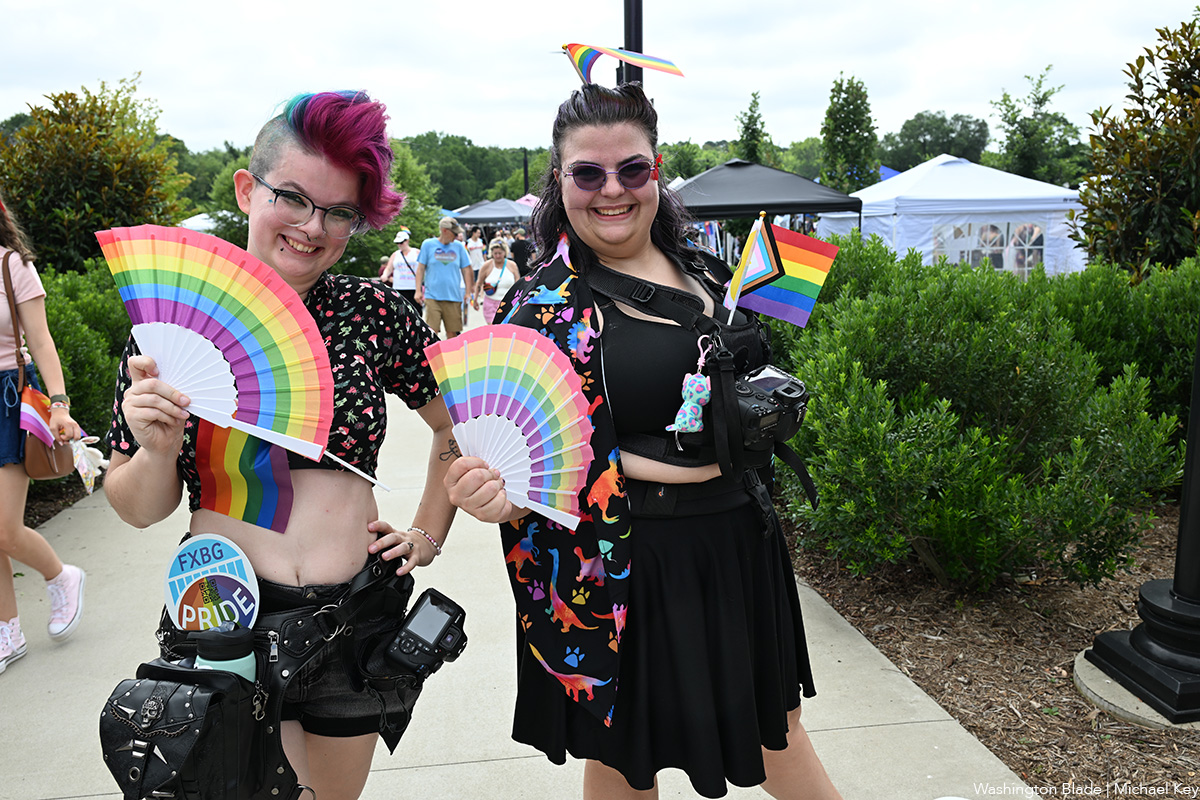
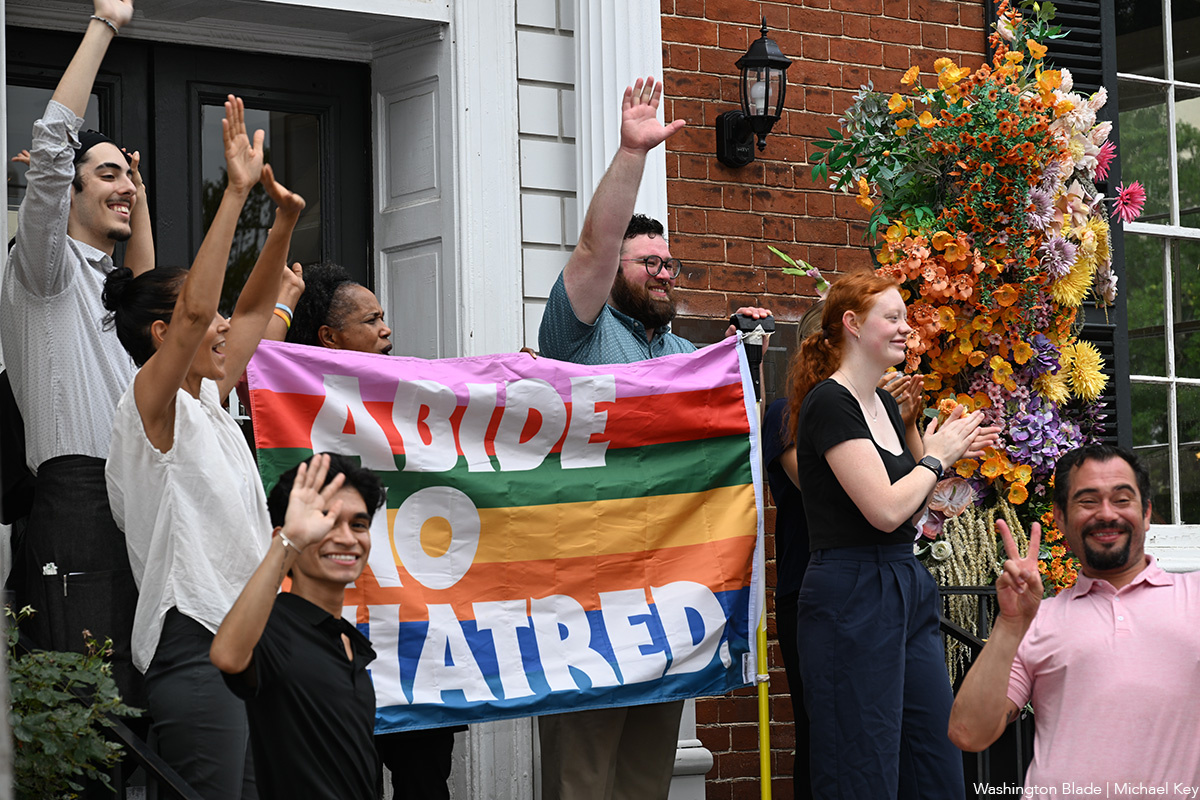
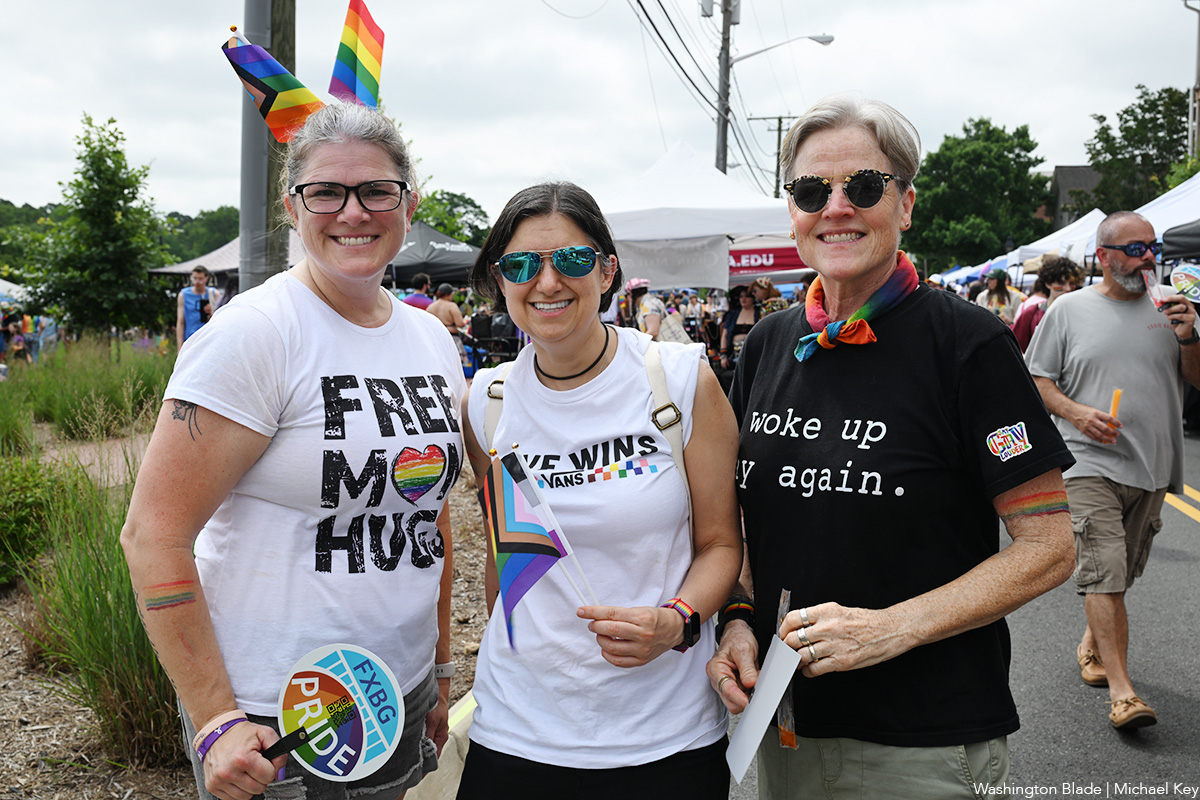
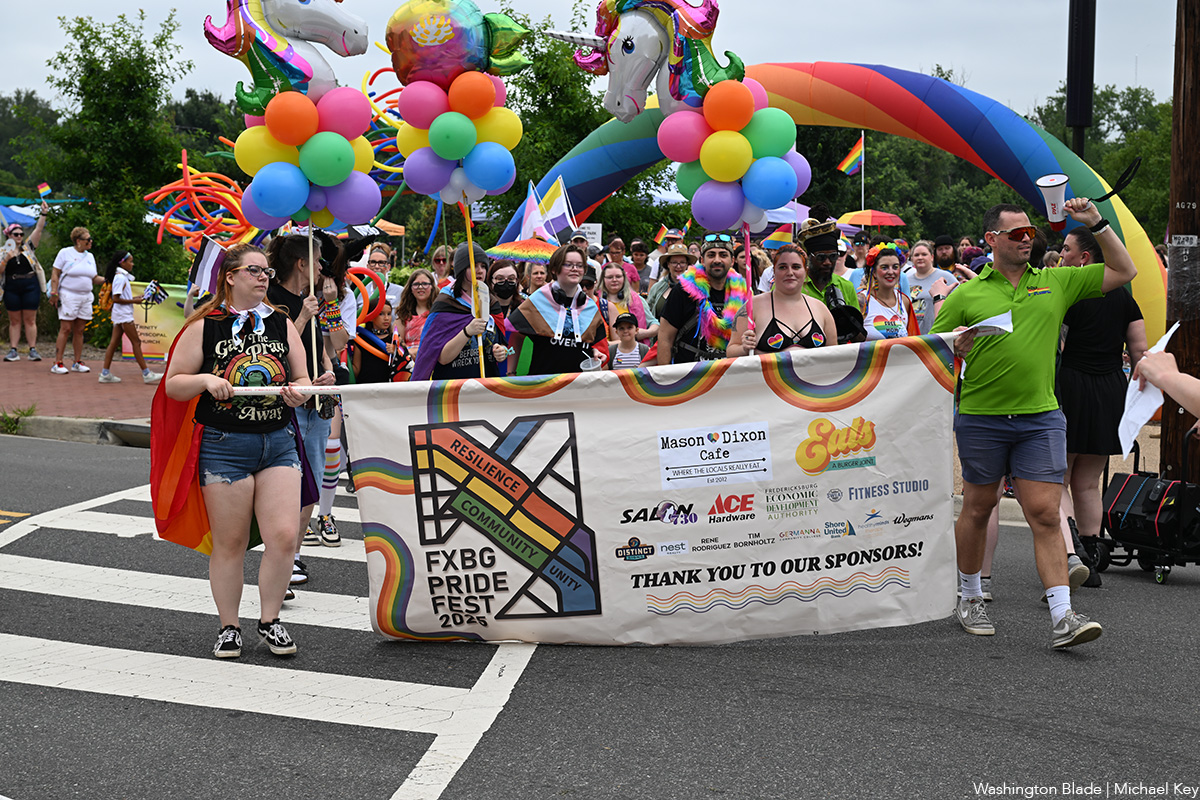
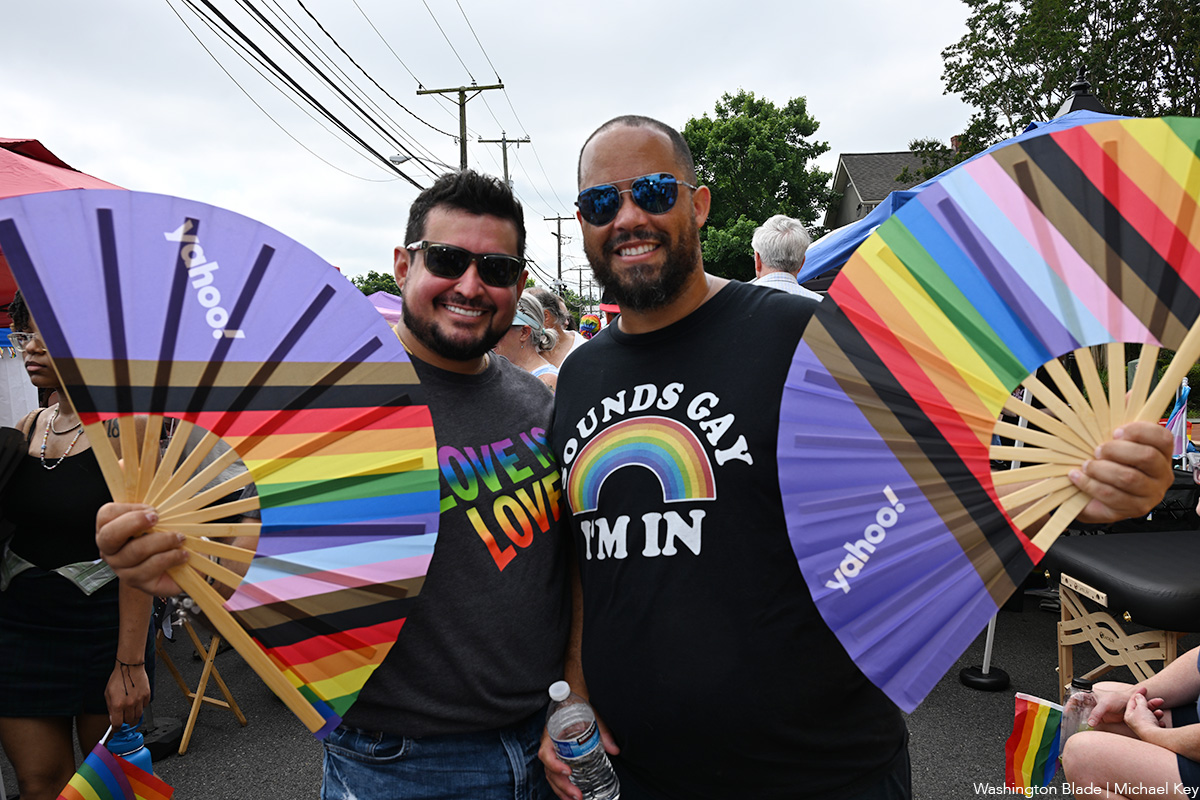
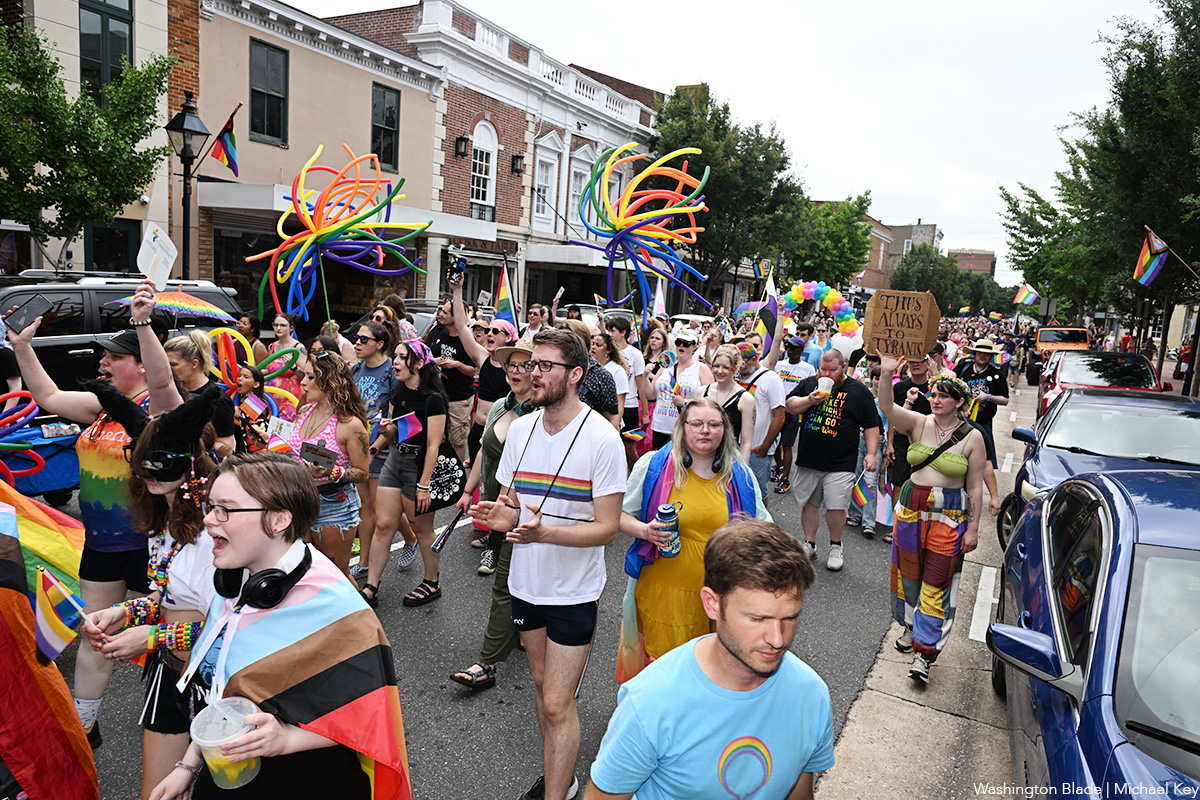
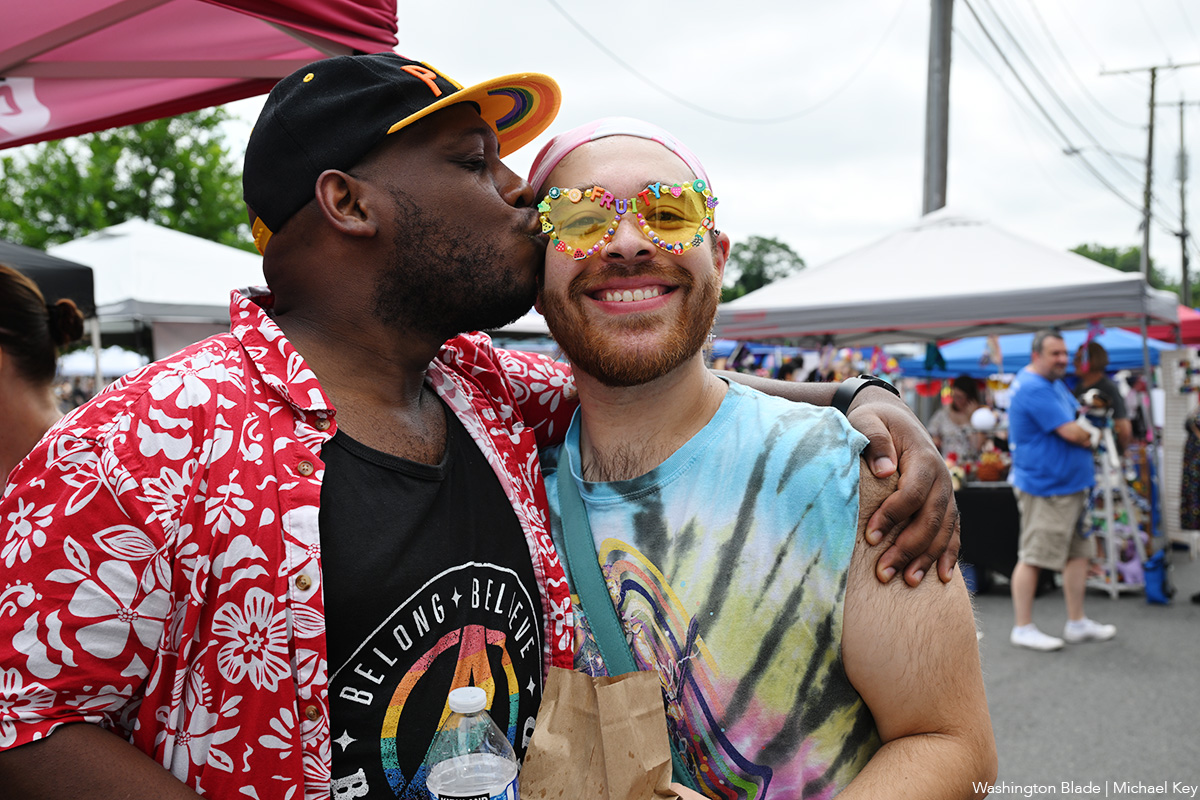
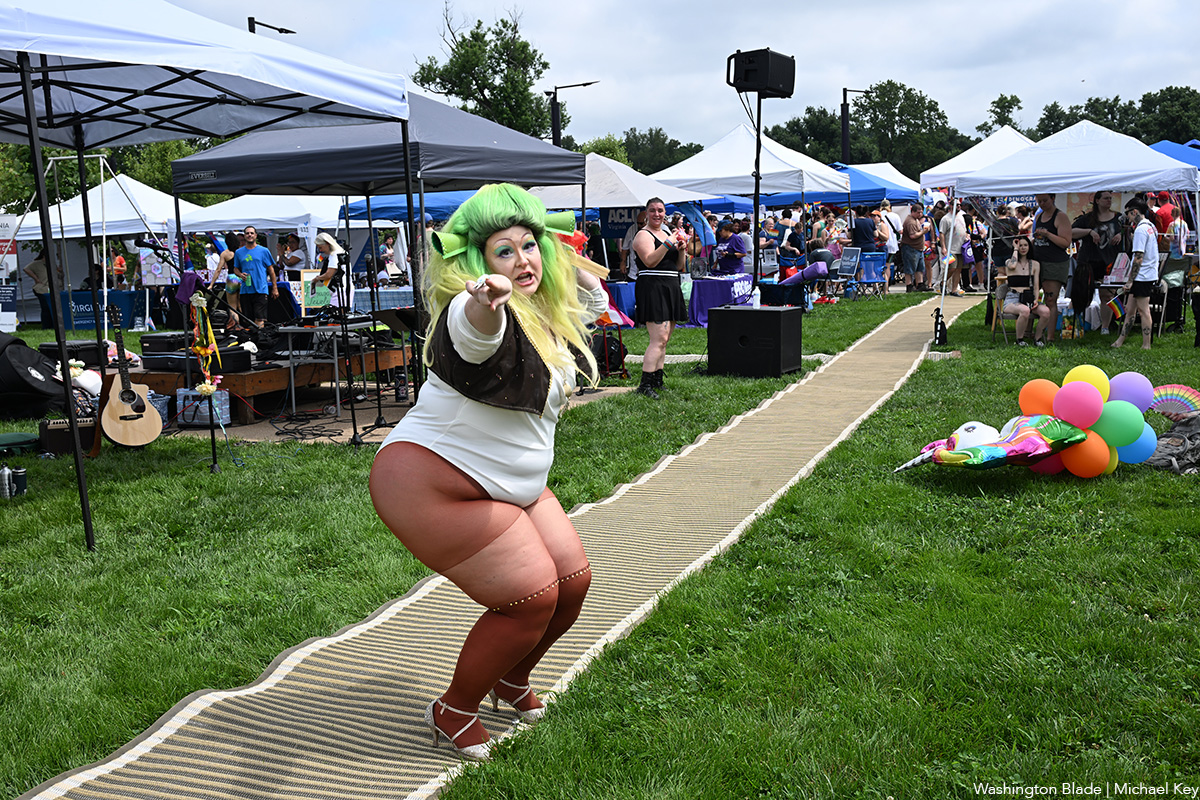
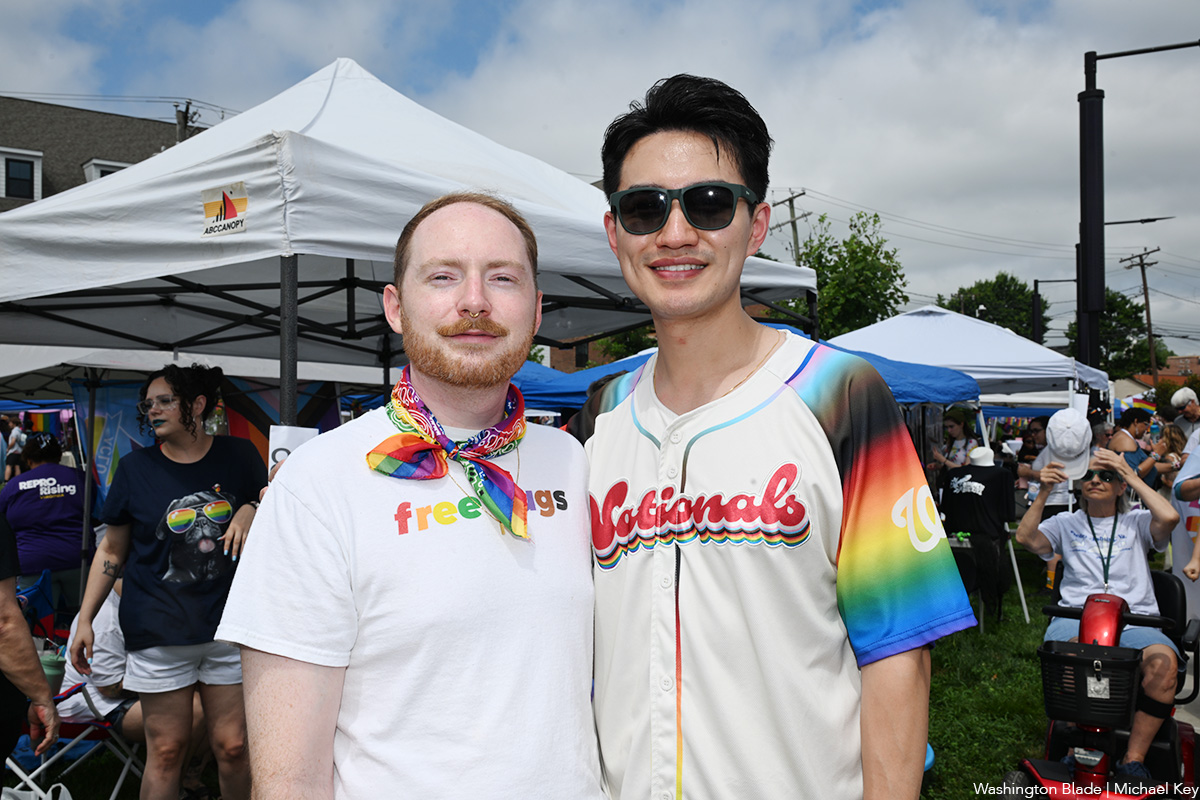

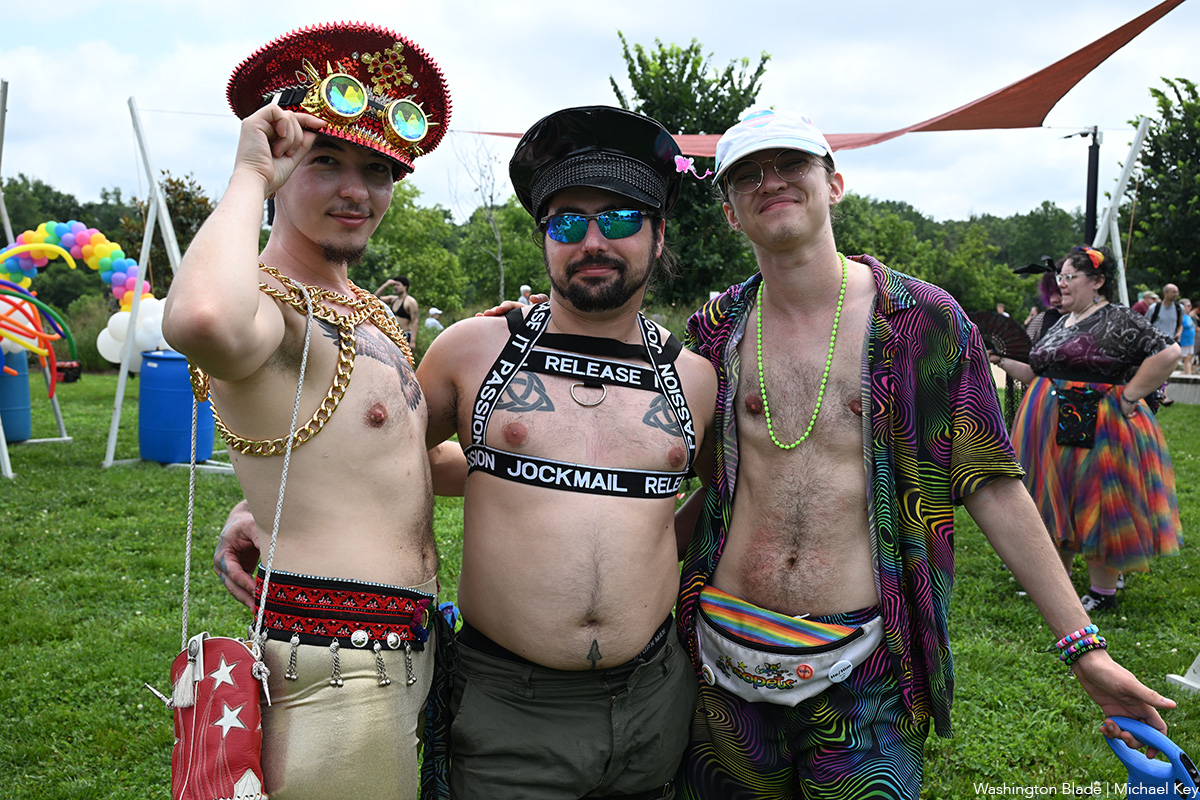

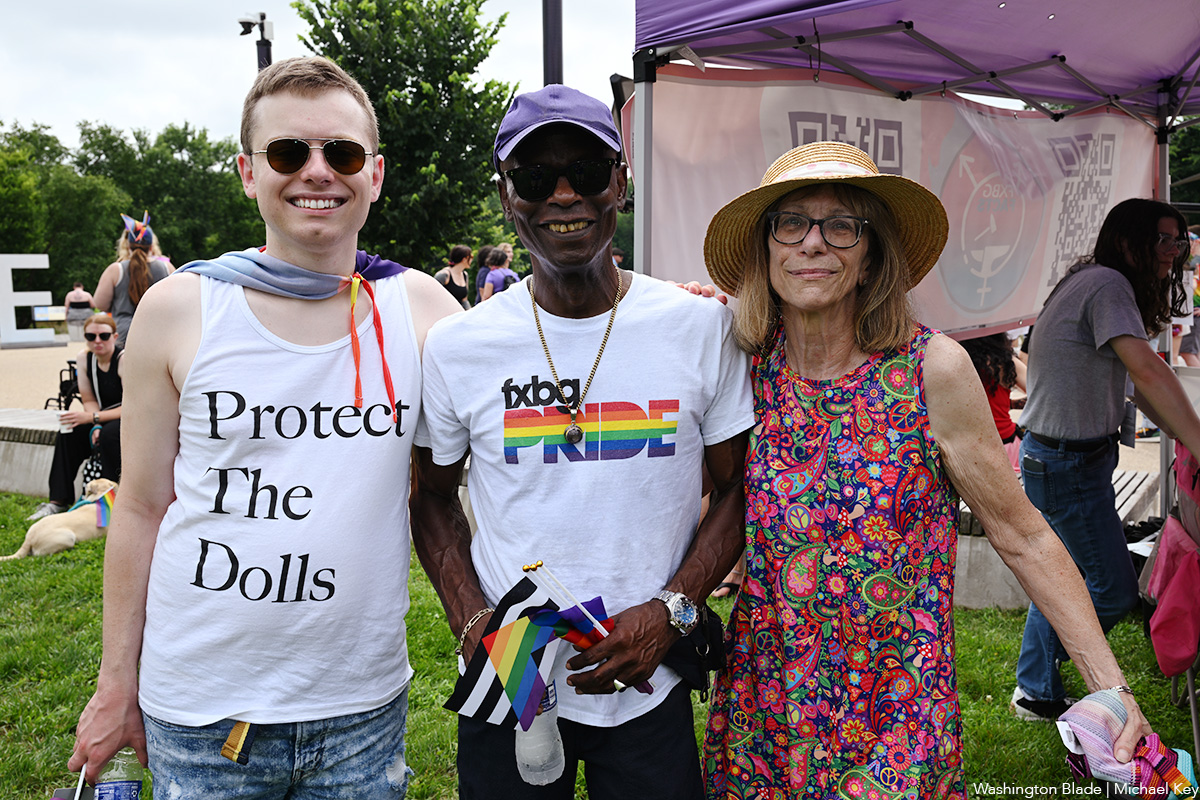


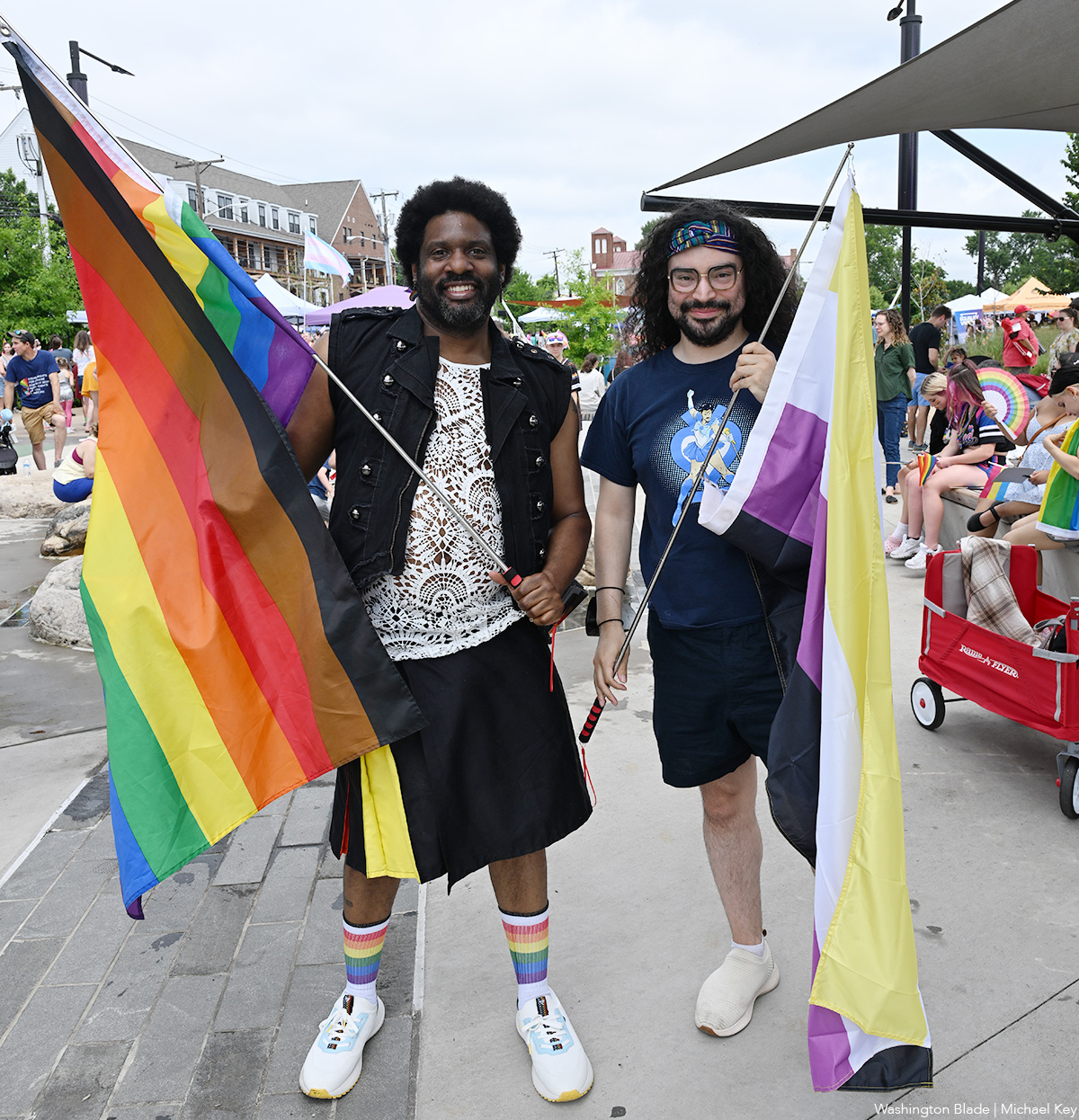
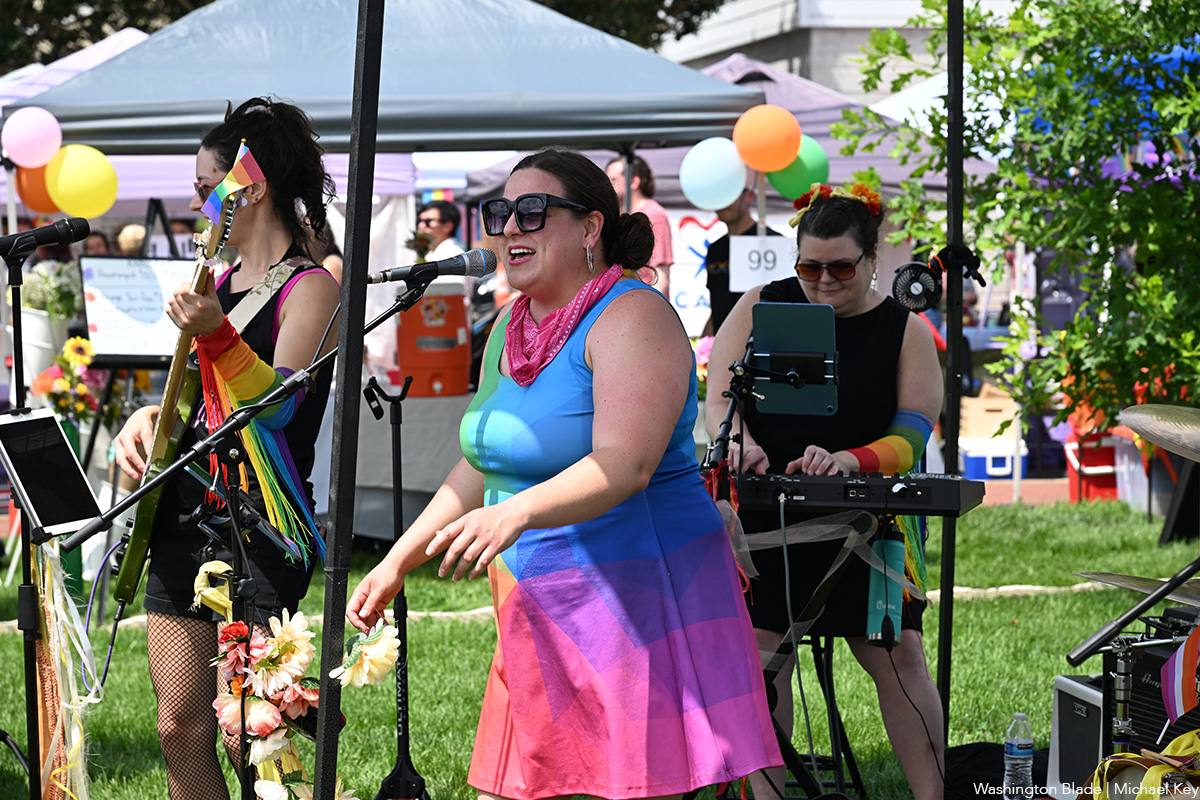
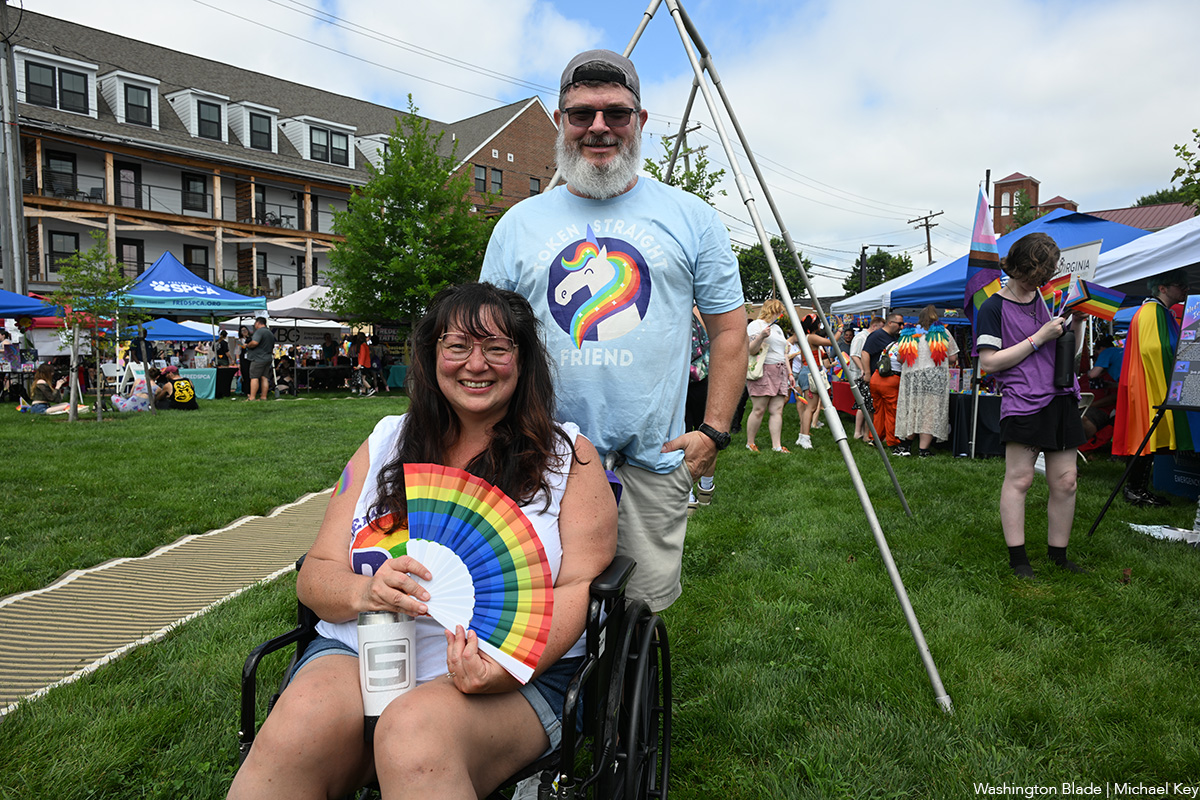
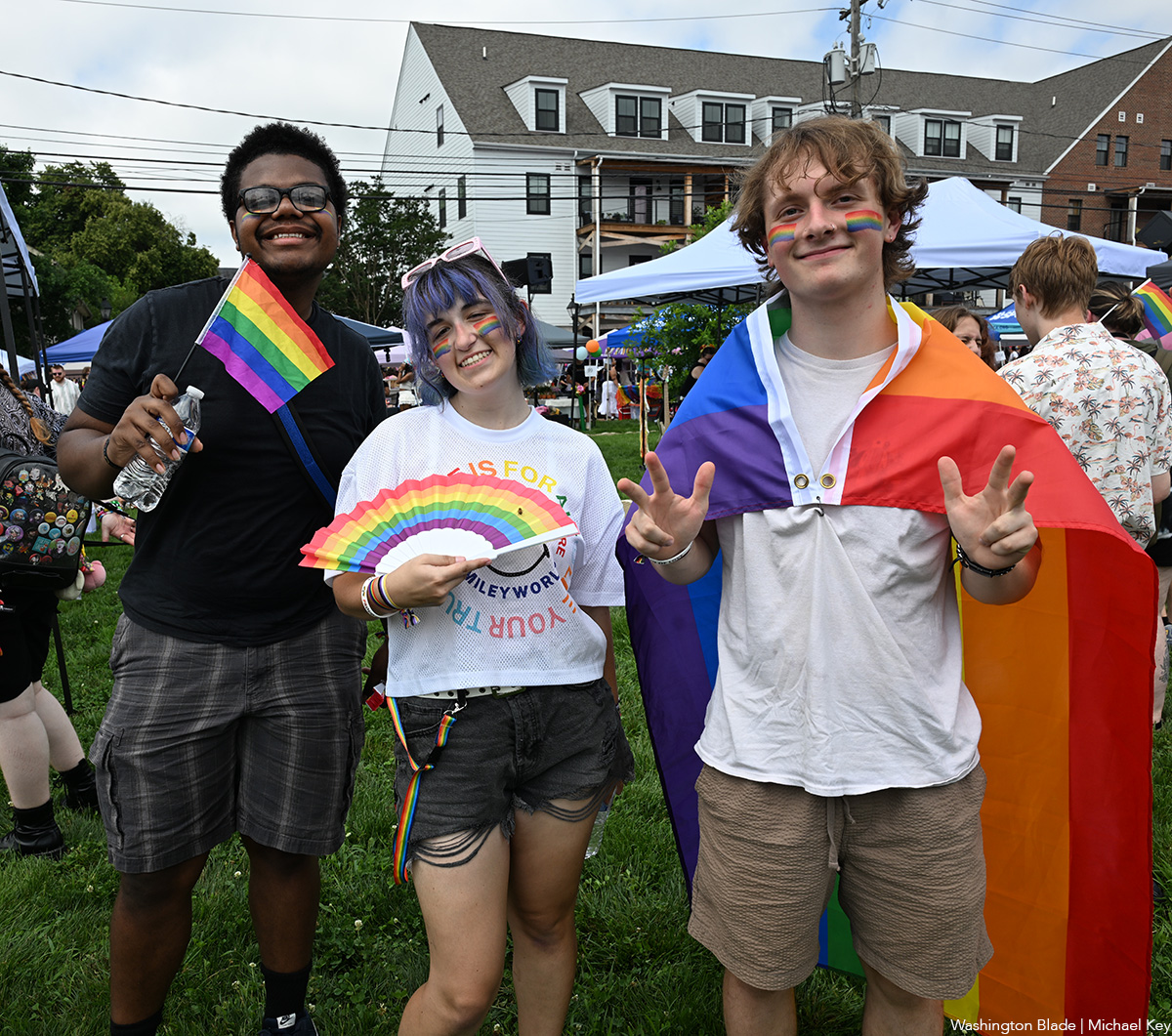
India
Anaya Bangar challenges ban on trans women in female cricket teams
Former Indian cricketer Sanjay Bangar’s daughter has received support
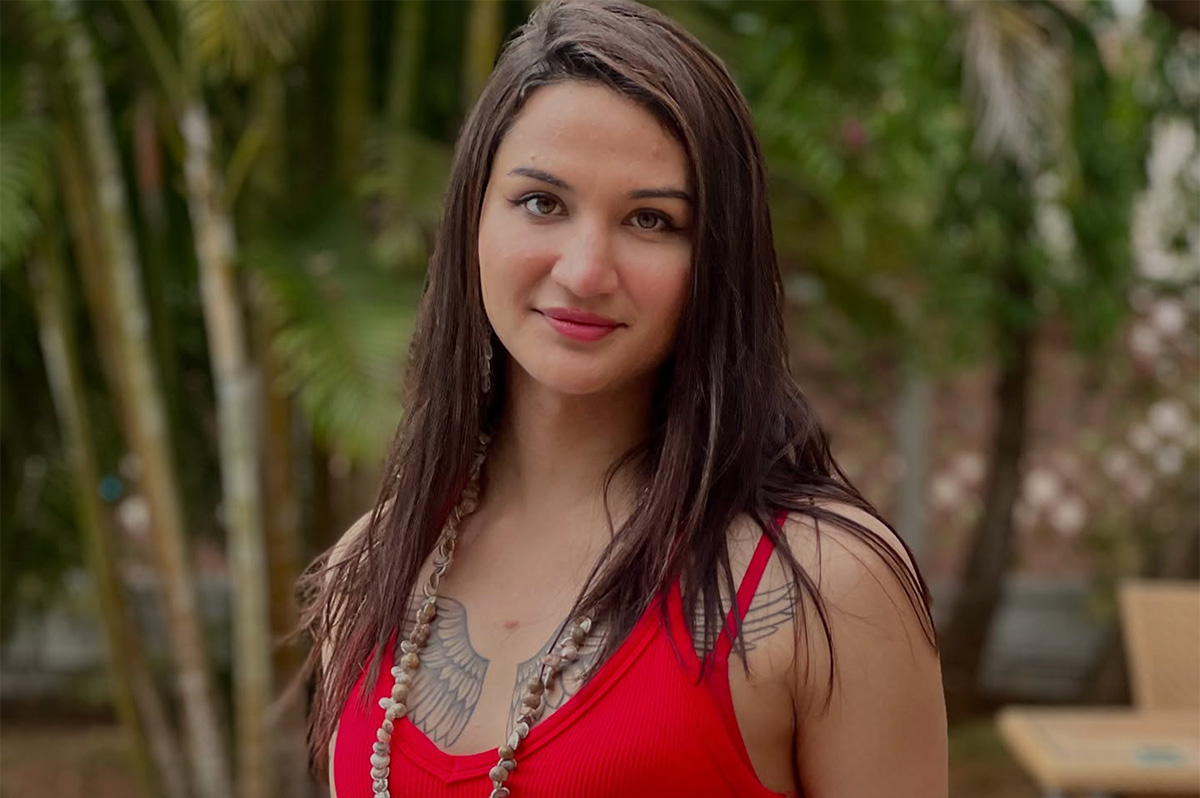
Anaya Bangar, the daughter of former Indian cricketer Sanjay Bangar, has partnered with the Manchester Metropolitan University Institute of Sport in the U.K. to assess her physiological profile following her gender-affirming surgery and undergoing hormone replacement therapy.
From January to March 2025, the 23-year-old underwent an eight-week research project that measured her glucose levels, oxygen uptake, muscle mass, strength, and endurance after extensive training.
The results, shared via Instagram, revealed her metrics align with those of cisgender female athletes, positioning her as eligible for women’s cricket under current scientific standards. Bangar’s findings challenge the International Cricket Council’s 2023 ban on transgender athletes in women’s cricket, prompting her to call for a science-based dialogue with the Board of Control for Cricket in India and the ICC to reform policies for transgender inclusion.
“I am talking with scientific evidence in my hand,” Bangar said in an interview posted to her Instagram page. “So, I hope, this makes an impact and I will be hoping to BCCI and ICC talking with me and discussing this further.”
On Nov. 21, 2023, the ICC enacted a controversial policy barring trans women from international women’s cricket. Finalized after a board meeting in Ahmedabad, India, the regulation prohibits any trans player who has experienced male puberty from competing, irrespective of gender-affirming surgery or hormone therapy. Developed through a 9-month consultation led by the ICC’s Medical Advisory Committee, the rule aims to safeguard the “integrity, safety, and fairness” of women’s cricket but has drawn criticism for excluding athletes like Canada’s Danielle McGahey, the first trans woman to play internationally. The policy, which allows domestic boards to set their own rules, is slated for review by November 2025.
Bangar shared a document on social media verifying her participation in a physiological study at the Manchester Metropolitan University Institute of Sport, conducted from Jan. 20 to March 3, 2025, focused on cricket performance. The report confirmed that her vital metrics — including haemoglobin, blood glucose, peak power, and mean power — aligned with those of cisgender female athletes. Initially, her fasting blood glucose measured 6.1 mmol/L, slightly above the typical non-diabetic range of 4.0–5.9 mmol/L, but subsequent tests showed it normalized, reinforcing the study’s findings that her physical profile meets female athletic standards.
“I am submitting this to the BCCI and ICC, with full transparency and hope,” said Bangar. “My only intention is to start a conversation based on facts not fear. To build space, not divide it.”
In a letter to the BCCI and the ICC, Bangar emphasized her test results from the Manchester Metropolitan University study. She explained that the research aimed to assess how hormone therapy had influenced her strength, stamina, haemoglobin, glucose levels, and overall performance, benchmarked directly against cisgender female athletic standards.
Bangar’s letter to the BCCI and the ICC clarified the Manchester study was not intended as a political statement but as a catalyst for a science-driven dialogue on fairness and inclusion in cricket. She emphasized the importance of prioritizing empirical data over assumptions to shape equitable policies for trans athletes in the sport.
Bangar urged the BCCI, the world’s most influential cricket authority, to initiate a formal dialogue on trans women’s inclusion in women’s cricket, rooted in medical science, performance metrics, and ethical fairness. She called for the exploration of eligibility pathways based on sport-specific criteria, such as haemoglobin thresholds, testosterone suppression timelines, and standardized performance testing. Additionally, she advocated for collaboration with experts, athletes, and legal advisors to develop policies that balance inclusivity with competitive integrity.
“I am releasing my report and story publicly not for sympathy, but for truth. Because inclusion does not mean ignoring fairness, it means measuring it, transparently and responsibly,” said Bangar in a letter to the BCCI. “I would deeply appreciate the opportunity to meet with you or a representative of the BCCI or ICC to present my findings, discuss possible policy pathways, and work towards a future where every athlete is evaluated based on real data, not outdated perceptions.”
Before her transition, Bangar competed for Islam Gymkhana in Mumbai and Hinckley Cricket Club in the U.K., showcasing her talent in domestic cricket circuits. Her father, Sanjay Bangar, was a dependable all-rounder for the Indian national cricket team from 2001 to 2004, playing 12 test matches and 15 One Day Internationals. He later served as a batting coach for the Indian team from 2014 to 2019, contributing to its strategic development.
Cricket in India is a cultural phenomenon, commanding a fanbase of more than 1 billion, with more than 80 percent of global cricket viewership originating from the country.
The International Cricket Council, the sport’s governing body, oversees 12 full member nations and more than 90 associate members, with the U.S. recently gaining associate member status in 2019 and co-hosting the 2024 ICC Men’s T20 World Cup. The BCCI generated approximately $2.25 billion in revenue in the 2023–24 financial year, primarily from the Indian Premier League, bilateral series, and ICC revenue sharing. The ICC earns over $3 billion from media rights in India alone for the 2024–27 cycle, contributing nearly 90 percent of its global media rights revenue, with the BCCI receiving 38.5 percent of the ICC’s annual earnings, approximately $231 million per year.
Women’s cricket in India enjoys a growing fanbase, with over 300 million viewers for the Women’s Premier League in 2024, making it a significant driver of the sport’s global popularity. The International Cricket Council oversees women’s cricket in 12 full member nations and over 90 associate members, with the U.S. fielding a women’s team since gaining associate status in 2019 and competing in ICC events like the 2024 Women’s T20 World Cup qualifiers. The BCCI invests heavily in women’s cricket, allocating approximately $60 million annually to the WPL and domestic programs in 2024–25, while contributing to the ICC’s $20 million budget for women’s cricket development globally. India’s media market for women’s cricket, including WPL broadcasting rights, generated $120 million in 2024, accounting for over 50 percent of the ICC’s women’s cricket media revenue.
“As a woman, I feel when someone says that they are women, then they are, be trans or cis. A trans woman is definitely the same as a cis woman emotionally and in vitals, and specially, when someone is on hormone replacement therapy. Stopping Anaya Bangar from playing is discrimination and violation of her rights. It is really sad and painful that every transwoman need to fight and prove their identity everywhere,” said Indrani Chakraborty, an LGBTQ rights activist and a mother of a trans woman. “If ICC and BCCI is stopping her from playing for being transgender, then I will say this to be their lack of awareness and of course the social mindsets which deny acceptance.”
Chakraborty told the Blade that Bangar is an asset, no matter what. She said that the women’s cricket team will only benefit by participation, but the discriminating policies are the hindrance.
“Actually the transgender community face such discrimination in every sphere. In spite of being potent, they face rejection. This is highly inhuman. These attitudes is regressive and will never let to prosper. Are we really in 2025?,” said Chakraborty. “We, our mindset and the society are the issues. We, as a whole, need to get aware and have to come together for getting justice for Anaya. If today, we remain silent, the entire community will be oppressed. Proper knowledge of gender issues need to be understood.”
The BCCI and the International Cricket Council have not responded to the Blade’s repeated requests for comment.
Theater
‘Andy Warhol in Iran’ a charming look at intersection of art, politics
Mosaic production plumbs kidnapping plot of iconic artist for humor
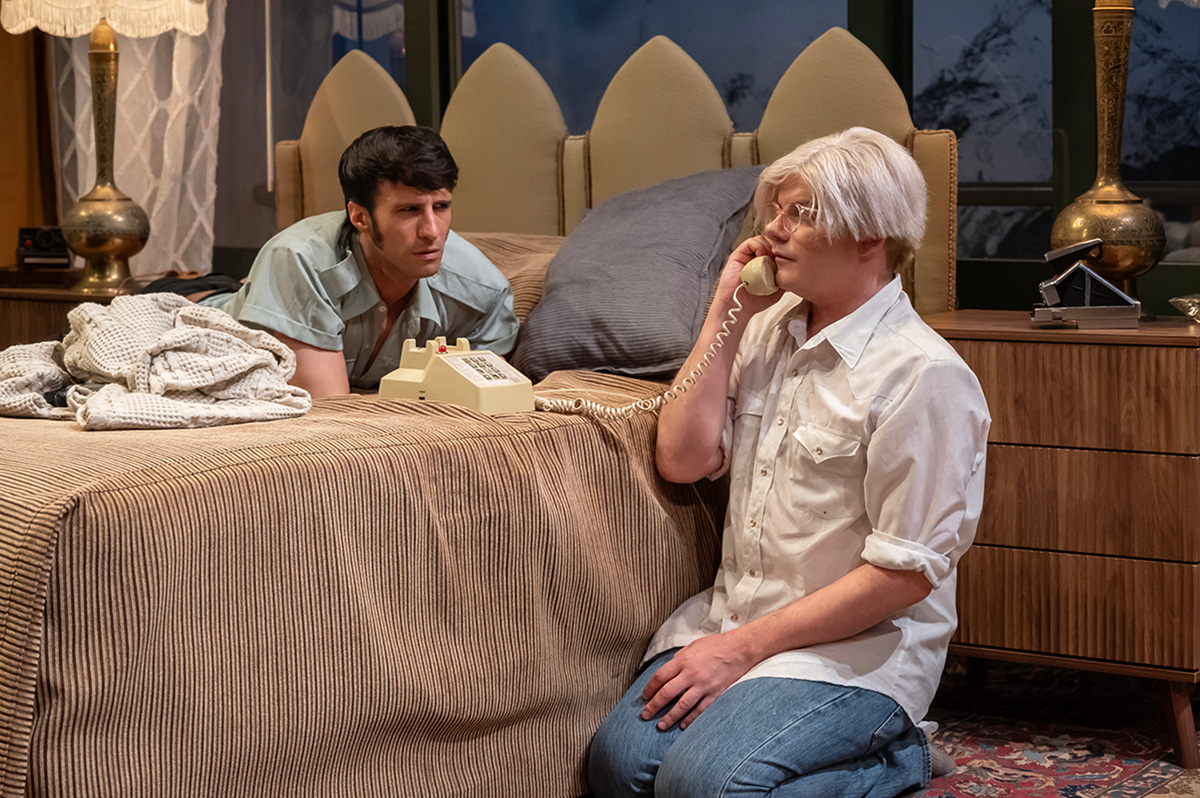
‘Andy Warhol in Iran’
Through July 6
Mosaic Theater Company at Atlas Performing Arts Center
1333 H St., N.E., WDC
$70
Mosaictheater.org
Behind the blasé veneer, Andy Warhol was more curious than people knew. Particularly when it came to money. He kept a close eye on how the ultra-rich lived, what fellow artists were being paid and who was paying them, and, of course, all the new and more saleable ways of making and selling art.
In playwright Brent Askari’s “Andy Warhol in Iran,” now playing at Mosaic Theater Company, Warhol (Alex Mills) is brought outside of his usual area of interest when he lands face to face with a young revolutionary. While Warhol could be artistically revolutionary, he didn’t connect with the idea of forgoing the pursuit of money and fame for the infinitely more difficult task of achieving social justice.
The 90-minute play is not fully factual, but rather inspired by Warhol’s real life 1976 trip to Tehran to make portraits of the royal Pahlavi family in the waning days of their reign, with a focus on Farah Diba, the Shah’s elegant wife and Iran’s last empress.
The action unfolds in a Tehran hotel suite boasting a glorious view of the snowcapped Alborz Mountains not far from Iran’s vibrant and bustling capital. It’s here, disguised as room service, that Farhad (played by Nathan Mohebbi) gains entrance to Warhol’s rooms, seeking to kidnap the pop art star to garner attention for the university students’ movement.
Warhol meets the armed intruder with a sort of wide-eyed wonderment, flummoxed why he has been selected for abduction. Warhol can’t understand why a young man like Farhad wouldn’t prefer to be paid a big ransom on the spot, or be cast as a star in one of the Warhol Factory flicks.
When Farhad replies it’s because Warhol is the most decadent artist in the world, Warhol mistakenly takes it for the ultimate compliment. After all, his biggest successes had been connected to celebrity and consumerism (think Campbell’s Soup Cans. 1962).
For Warhol, decadence is aspirational. He made portraits of financiers, movie stars, and jet setters. In fact, he’d been obsessed with the lives of the rich and famous since he was a small kid in Pittsburgh thumbing through Photoplay Magazine while bed bound with Saint Vitus Dance.
Accompanying Warhol to Tehran (unseen) are his business manager Fred Hughes, and Bob Colacello, editor of Interview magazine. Together, they make a merry trio of gay social climbers. These kinds of trips were a boon to the artist. Not only did they solidify a new strata of high society contacts, but were also superbly lucrative, thickly padding the painter’s pockets.
While in Iran, Warhol wanted only to view Farah’s vast world-class collection of jewels, sample the caviar on tap, and get his Polaroids. Then he’d fly first class back to New York and transfer the images to silk screen and sell the portraits to the Persian royals at a hefty price. He didn’t foresee any obstacles along the way.
Serge Seiden’s direction is spot on. He’s rendered a wonderfully even two-hander with a pair of terrifically cast actors. And Seiden plumbs the piece for humor mostly drawn from the absurdity of the situation without missing any of the serious bits.
As Warhol, out actor Mills is instantly recognizable as the eccentric artist. He’s wearing the button-down shirt, jeans, blazer, glasses, and, of course the famed shock of white hair wig (here a little more Karen than Andy). His portrayal is better than an imitation. He gives a bit of the fey and confused, but has also infuses him with a certain dynamism.
The energy works well with the intensity of Mohebbi’s would-be kidnapper Farhad. And while it isn’t a romance, it’s not impossible to think that Warhol might fall for a handsome male captor.
The connection between art and politics is almost always interesting; and though not a super deep dive into the era or the life of an artist, “Andy Warhol in Iran” is a compelling, charming, and sometimes funny glimpse into that intersection.
-

 U.S. Supreme Court4 days ago
U.S. Supreme Court4 days agoSupreme Court upholds ACA rule that makes PrEP, other preventative care free
-

 U.S. Supreme Court4 days ago
U.S. Supreme Court4 days agoSupreme Court rules parents must have option to opt children out of LGBTQ-specific lessons
-
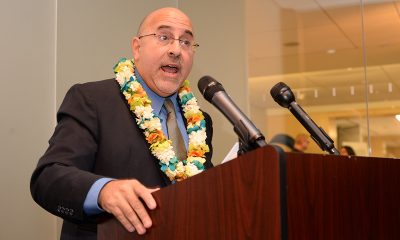
 National5 days ago
National5 days agoEvan Wolfson on the 10-year legacy of marriage equality
-

 Congress5 days ago
Congress5 days agoSenate parliamentarian orders removal of gender-affirming care ban from GOP reconciliation bill





